Sunday, March 20, 2022
When we think of grain elevators an image of tall wooden sentinels that can be seen for many kilometers across the prairies likely comes to mind. Grain elevators came to symbolize a community and the agricultural wealth it could boast of, with some towns have four or five lined up along the tracks. While they commonly dotted the prairies every 10 – 12 kilometers, they were also found in Ontario. They were developed to solve a logistical problem of getting grain to market. In the early days of railway, farmers would load their grain into two bushel sacks and transport it to the closest train station. There, they would take it to the platform and dump the sacks into waiting boxcars. This was a lengthy and back breaking process and the Canadian Pacific Railway (CPR) started to demand vertical warehouses for loading boxcars. These buildings had a long vertical “leg” with a drive belt wrapped around it. To this belt was attached cups that were used to elevate the grain and store it in large vertical bins.
The first grain elevator on the Canadian prairies was developed in Niverville, Manitoba in 1879 and was basically a grain silo. The more traditional shape started to appear in 1881 in the form of 25,000 bushel elevators. The CPR began to offer free land along their rail lines to allow the construction of standard size elevators. The picture below shows the grain elevator in Pontypool, Ontario, one of only two free-standing elevators remaining in the province. Other elevators exist as part of mills or other larger feed operations such as the one at Chalmers Milling Co. in Toronto. The Pontypool one illustrates the basic shape of the elevator.
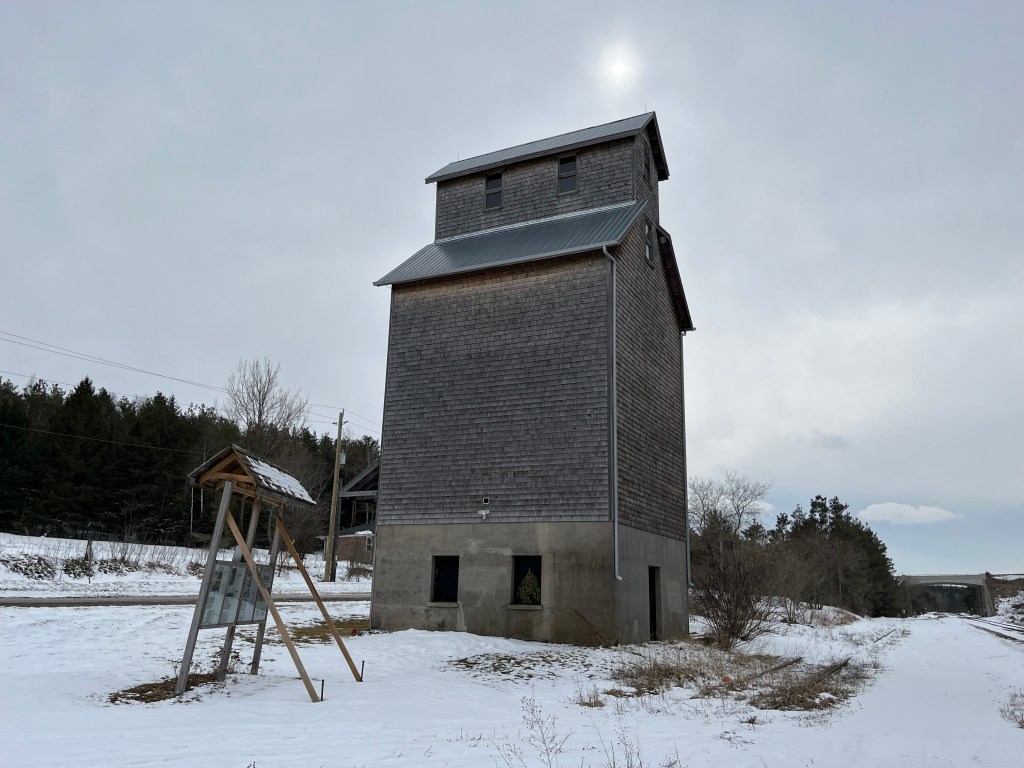
A couple of companies sprang up to fill the contracts building the elevators with the National Elevator Company getting the contract along CPR lines while Seare Grain Company built along the Canadian Northern Railway and Grand Trunk Pacific Railway. Farmer and grain merchants came to suspect collusion between the railways and the elevator construction companies and so they began to form unions and pools to build their own elevators. In 1906 the Grain Growers Grain Company began to operate in Alberta with others following in Manitoba and Saskatchewan.
Elevators were made with a sturdy wooden crib built of 2 by 8 boards that then had 2 by 6 inch ones stacked up to form the walls and internal bins. The outside would be covered with a wooden veneer which was originally painted red if along a CPR line. Wheat can weigh up to 60 pounds per bushel which means that a 25,000 bushel elevator could have 1.5 million pounds (680,000 kgs) of weight in it. This puts a lot of lateral pressure on the walls. Eventually, elevators that would hold 60,000 bushels were constructed. All elevators, regardless of size, had three basic elements. The elevator, the driveway and the office/engine room. A truck or wagon of grain would be driven onto a scale and weighed and the grain sampled to see what quality it was. It would then be dumped through the floor into the pit where it would be taken up the leg and poured into the correct storage bin. The empty truck would then be weighed again and the amount of grain deposited would be calculated from the weight difference. When it was time to load a train the appropriate grain would be pumped into the back hopper and then down a spout into the waiting boxcar. The illustration below was taken from The Canadian Encyclopedia and shows the inner workings of a grain elevator.
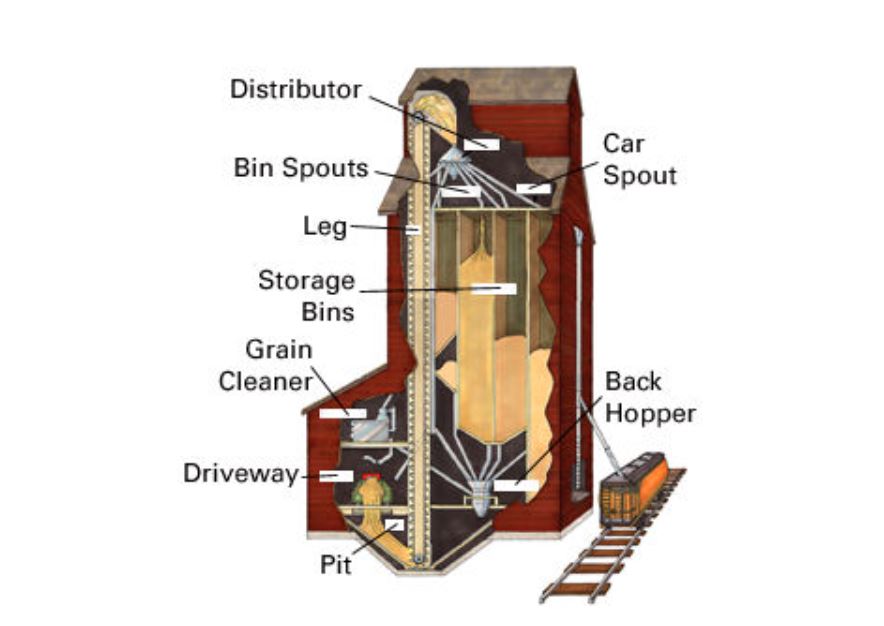
The CPR built a line through Pontypool in the 1880s which opened up the Toronto market to local farmers. In 1894 a grain elevator was built and before long there were two elevators serving the community of about 600 residents. Both of these were gone by 1918 and a new one was constructed for the local farmers to store their barley, oats and wheat before shipping it to market. As transportation systems improved the elevator became less important and by the 1970s it was closed. It sat abandoned for decades and was in a such a state of deterioration that the CPR considered demolishing it. Instead, they donated it to a group of volunteers known as the Friends of Pontypool Grain Elevator with the intention that it be preserved. One of the conditions was that the City of Kawartha Lakes take out the insurance on the property. With this arranged, the elevator has been given a new shingle veneer and had the power upgraded to meet current standards. Future plans include an information centre and place to remember Jewish heritage in the area. When Sunnyside Beach and other places in Toronto posted signs such as “No dogs or Jews”, Pontypool opened their doors to Jewish people who were looking to get out of the city. They came between the 1920s and 1950s and turned the local economy into a Jewish tourist industry camping and building cottages around one of the lakes in town.
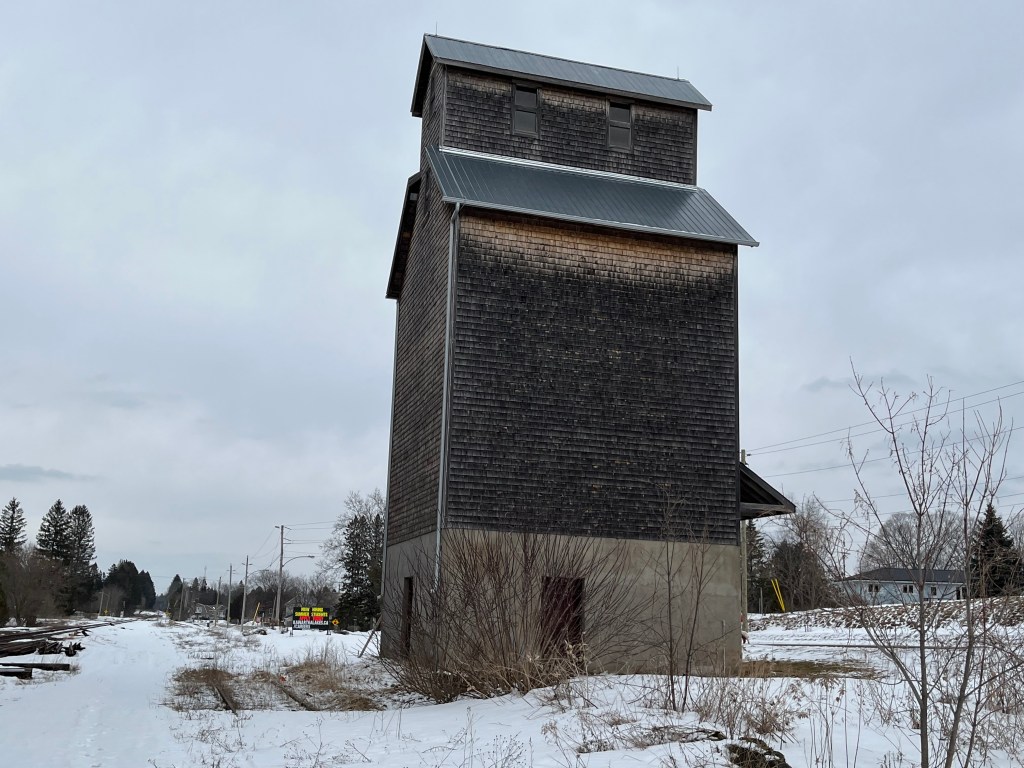
We have featured several failed heritage preservation stories and its nice to have one that is such a success to report on. There is a small information board at the grain elevator that shows the former train station whose foundation can still be located in the trees with its tracks in place. If exploring looking for this, please bear in mind that this is a functioning line of the CPR and crossing it could be considered to be trespassing. Accessing it from a street on the other side of the tracks might be another story though.

There’s also an historic picture that shows the two earlier grain elevators in Pontypool as well as many other photos depicting life in town in an earlier era.
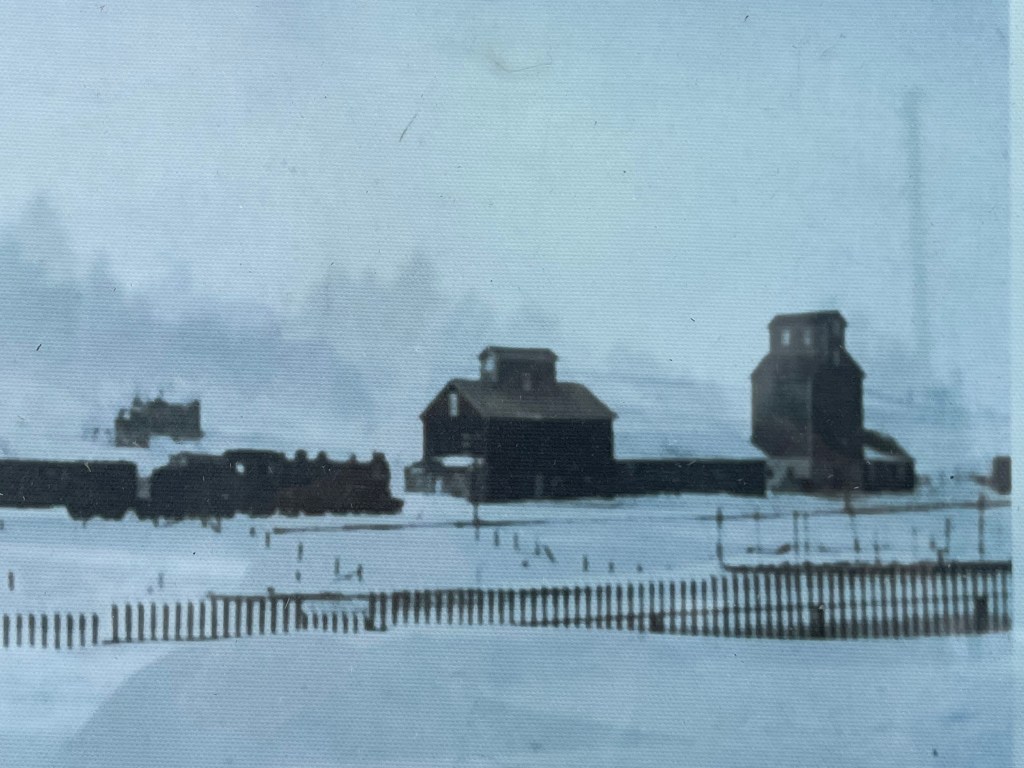
This visit to Pontypool was just a quick stop on the way past so that I could check out a grain elevator that I spotted from Highway 35. There’s a lot of interesting history and architecture in town if you have the time to explore.
Related stories: Chalmers Milling Co., Sunnyside Beach
Google Maps Link: Pontypool
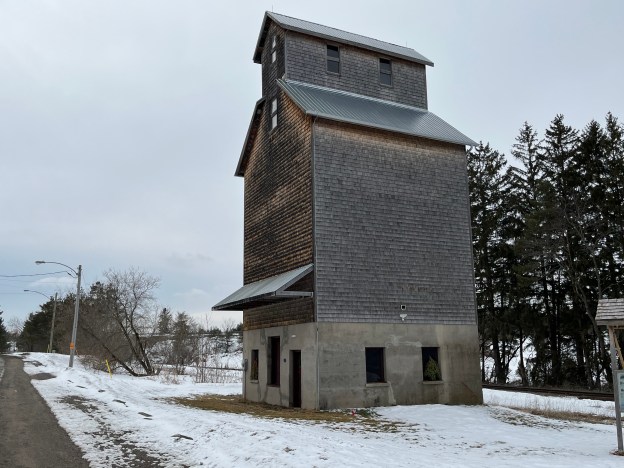
Yet another great article. My Husbands parents used to talk about Pontypool all the time
Pingback: Grain Elevators | Hiking the GTA